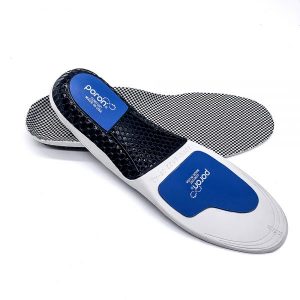
When choosing orthotic insoles for plantar fasciitis, there are a few key factors to consider. Here’s a step-by-step guide to help you make the right choice:
1. Consult with a healthcare professional
Before purchasing orthotic insoles, it’s important to consult with a podiatrist or orthopedic specialist. They can assess your condition and provide recommendations tailored to your specific needs.
2. Arch type
Determine your foot arch type – flat, neutral, or high. This will help you select insoles that provide appropriate support. Flat-footed individuals generally benefit from insoles with higher arch support, while those with high arches may require insoles with more cushioning.
3. Cushioning and shock absorption
Look for insoles that offer excellent cushioning and shock absorption properties. Plantar fasciitis often involves inflammation of the plantar fascia, a thick band of tissue running along the bottom of the foot. Cushioned insoles can help relieve pressure on the affected area and reduce pain.
4. Arch support
Opt for insoles that provide proper arch support. They should help distribute your body weight evenly across the foot and reduce strain on the plantar fascia. Look for insoles with molded arch contours or customizable arch inserts.
5. Heel cupping
Consider insoles with deep heel cups. These cups cradle the heel, promoting stability and alignment while reducing excessive pronation (inward rolling) or supination (outward rolling) of the foot. This can alleviate stress on the plantar fascia.
6. Material and breathability
Choose insoles made of high-quality materials that offer breathability and moisture-wicking properties. This helps keep your feet dry, comfortable, and prevents odor buildup.
7. Shoe compatibility
Ensure that the orthotic insoles are compatible with the footwear you plan to use them in. Some insoles are designed for specific types of shoes, such as athletic shoes, dress shoes, or casual footwear. Check the sizing and trimmability options to ensure a proper fit.
8. Comfort and fit
It’s crucial to select insoles that feel comfortable and fit well within your shoes. They should neither be too tight nor too loose. Consider trying out different brands or models to find the one that suits you best.
Remember, the effectiveness of orthotic insoles can vary depending on individual factors, so it’s essential to work closely with a healthcare professional to determine the most appropriate solution for your plantar fasciitis.
Related product links: https://www.aideastep.com/product/plantar-fasciitis-orthotics/.
